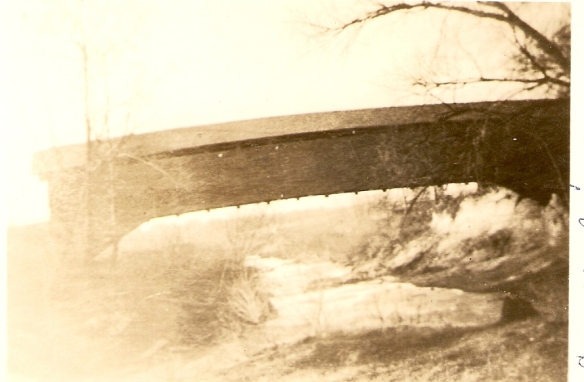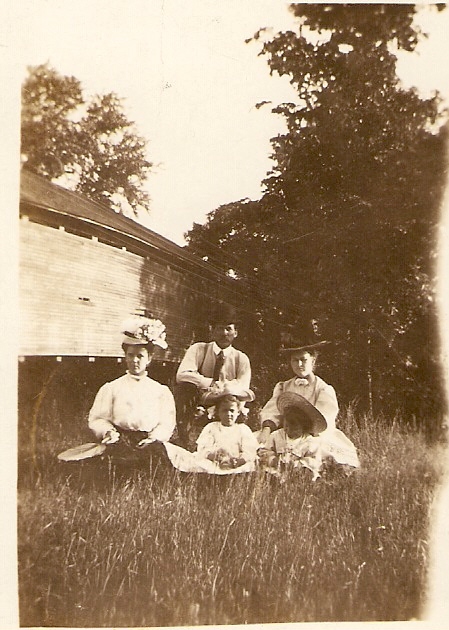The Patoka River flows ever so slowly through Winslow.
It was once the livelyhood of the town, a route for flatboats taking furs and goods to New Orleans in the early 1800s. Mills sprung up around it. The town of Winslow was built around it. Today it is the source of our town’s drinking water. And it yet may be again the source of the towns livelyhood. It seems to be about the only asset we have, promoting our hunting and fishing areas. The Riverside Park has seen a pleasant restoration the past few years. It boasts a river access from the DNR and a monthly flea market during the summer. It has picnic tables and grills. You can usually find someone eating down there or just sitting and relaxing. I can remember having family reunions there as a child in the 60s.
The brush has been cleared and you can actually see the old curve of the river when you come into town from the South. The Pontiac garage has been torn down and it’s area will enhance the river views also. You might even be able to see the old dam constructed by the CCC corps during the Great Depression in the 1930s through the trees.
The state tore down the old green iron highway bridge and now we have one of the standard ugly concrete “wide enough we can drive anything across it” bridges on the State Highway 61.
The green iron bridge is the one I remember from my childhood. We lived out in the country and when we would drive to town, the bridge scared me and I would lay in the floor board. I did not like driving over rivers, no matter how large or small they were. Christmas in the 60s was magical. You would come across the bridge, peek your head up from the floorboard, and the gold tinsel decorations lit up and strung across the street would be the first thing you saw. The cone shaped Art Deco Santa and tree lights hanging from the lamp posts were lit up. The Dime Store window was full of toys and their basement opened in the Christmas season full of toys. That is my memory of the Winslow Town bridge that was built in the 1930s.

The Old Railroad Bridge in Winslow Indiana during the 1913 Flood link to: http://www.jddedman.com
Before that, there was the Covered Bridge, torn down around 1930, one of those wooden trussed structures with a roof that spanned the Patoka. The old foundation stones for the covered bridge are one of those things left behind that still say “I was here.” Families held picnics next to the bridge, so they could visit with other friends and family coming into town.
In 1921, the river was dredged and straightened, leaving behind the old curly sloughs. My brother and son fish from the old sloughs. The project was called the Houchins Ditch. It runs for 17 miles from Winslow to Wheeling. The purpose was to drain 100,000 acres of virgin forest for farm land. After 3 years of cutting straight through with steam powered floating barges, it failed. It still flooded because the flood waters were coming from the Wabash. East from Winslow on to Pikeville the river remains as it originally was, with it’s curves winding through the countryside.

One of 3 dredge boats west of Winslow straightening the River link to: http://www.jddedman.com
He said it was where Abraham Lincoln and his family crossed when passing through on the Old Winslow Road while moving to Illinois. According to him, the Evans and the Lincoln’s were acquaintances. But the Old Winslow Road and Abraham Lincoln are posts for another day. When you google earth the area, you can vaguely see a trace of a road through there.
When I was little in the early 60s, my dad used to take us to the Ford to swim when the River was low. It was always crowded with other families and kids. The River moves so slow and there were rocks, so it wasn’t too deep for the kids. Since the Patoka Reservoir was built, I don’t remember seeing it that low anymore. I would take the Ford anyday rather than ride in that wooden chair on pulleys……
The Old Depot Road Bridge, on County Road 350 East which ran past the Railroad Depot, is an old iron truss, one lane bridge built circa 1915. It is well on it’s way to disappearing. It is closed to traffic and in the process of being torn down and replaced. This area was a community known as Goldthwaite at one time in the past.
It was a town that sprung up around the Goldthwaite coal mine, built by the coal company for the workers. These areas usually consisted of some homes and a company store where miners banked and purchased supplies with their mine tokens they were paid. It shows up on the old maps of the area in the 1890s. Like so many other towns, it disappeared when the coal mine did.









I thought I would leave you your first comment! I think you have done a great job – layout looks good and it’s interesting. 🙂
Excellent job in doing your blog. Really well designed and very interesting. Thanks for the link.
Very nice I enjoyed the trip thru the past. I lived inthe east end of Winslow late 40’s early 50’s and have fond memories of the Patoka river,
Charles W. Bee, the photographer who took many of the pictures in your blog, is my paternal grandfather. You have no idea how thrilled I was to FINALLY be able to see his professional work.
Sadly, he passed away before I was born; however, after seeing the photographs he took, it felt as if I met him in spirit.
Every Memorial Day, my parents would take me to Winslow to decorate the graves of my grandfather and grandmother Bee and my great-grandfather Bee.
If I am not mistaken, the child in the front on the right of the photo of the Bee and McConnell families picnicking at the Winslow Bridge is my father.
Thank you for all of the hard work and effort you put into your blog and for featuring my grandfather Bee’s professional photographs. Please let me know if it is possible for me to acquire one of his pictures, as it would truly be a priceless treasure to me and my family.
My father was from Winslow. Like me his name was Charles W. Bee, his brother was Orvis Bee and his mother Zena Bee. My grandfather was a hunchback and worked at the bank. My grandmother was a nurse.
I’m quoting the part about Houchins Ditch in my book on the Mills family with full attribution, of course. 😉
I think I found my information on the DNR website, although it is mentioned several places online and in our history books.
Great stuff! Did you ever get around to that post on the Lincolns fording the Patoka? I’ve also heard that they overnighted elsewhere in the county with the Ropp family, and maybe lost and buried an infant there? I’d be interested to see material, too, about ephemeral coal communities at Ayreshire and Muren (“Aberdeen”).